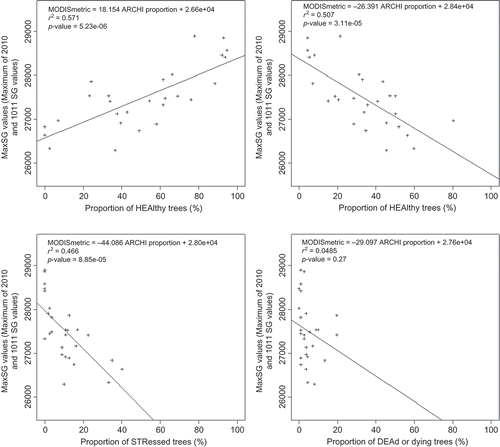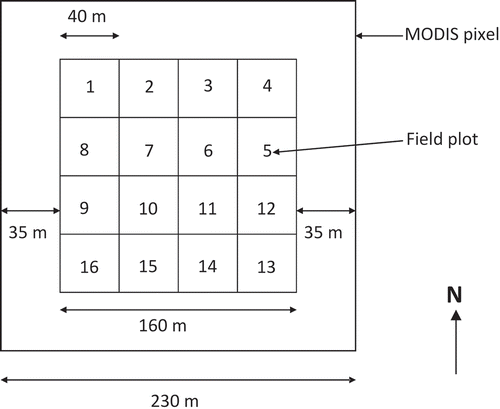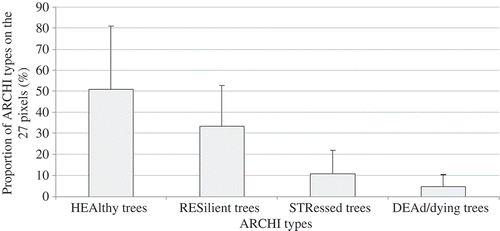Figures & data
Figure 3. BFAST decomposition of NDVI time series from 2000 to 2011 for a single pixel containing coniferous stands. Yt = original time series, St = seasonal component, Tt = trend component, and et = remainder component.
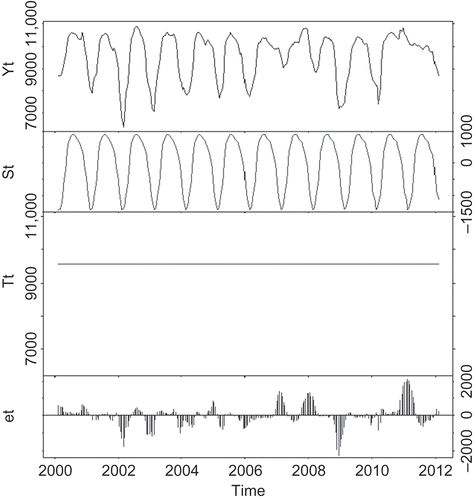
Figure 4. BFAST decomposition of NDVI time series for the 2000–2011 period for a single pixel. The date of the most important breakpoint is indicated by the dashed vertical line.
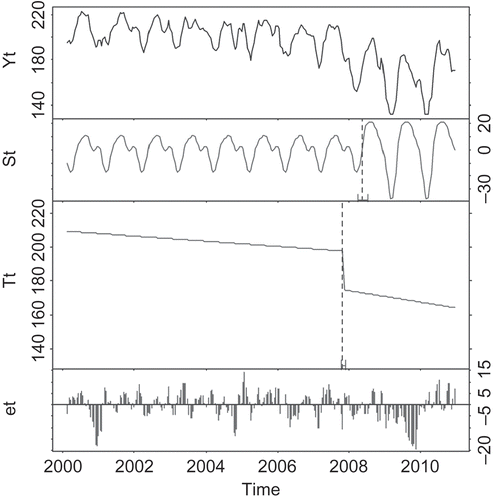
Table 1. Typology of the health status of silver fir as a function of the extent of the symptoms of decline of the crown and/or the recovery process
Figure 6. Illustrations of the four main ARCHI type: (a) HEAlthy tree, (b) STRessed tree, (c) RESilient tree, and (d) DEAd or dying tree.
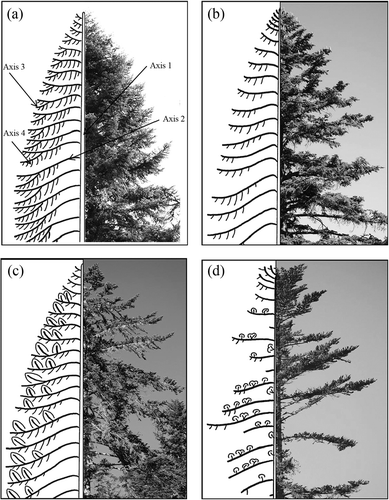
Table 2. Level and type of observations recorded with the ARCHI method
Figure 7. Scatterplots of the standardized slope of the trends processed using spring greenness (x-axis) and BFAST (y-axis) for (a) the whole series and for (b) for spring dates only.
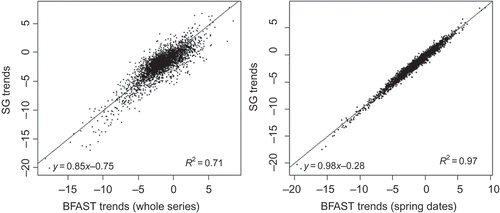
Figure 8. Map of trends (a) produced with the spring greenness method and (b) with the BFAST method (site 1).
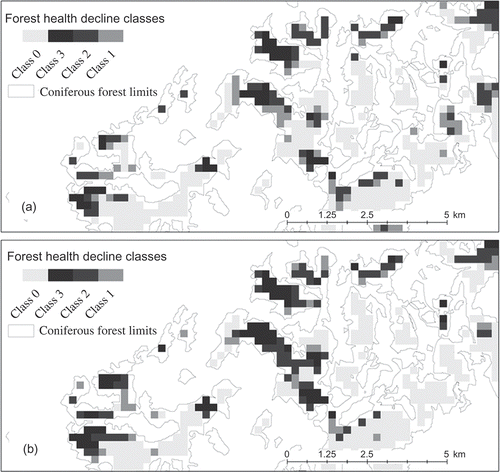
Table 3. Contingency matrices between classes of (a) SG and BFAST trends for the whole series and (b) SG and BFAST trends for spring dates only
Figure 9. Barplots of (left) annual count of negative breakpoints and (right) means of negative breakpoints with standard deviation.

Figure 11. Relations between proportions of the main ARCHI types and measured spring greenness trends in the period 2000–2011.
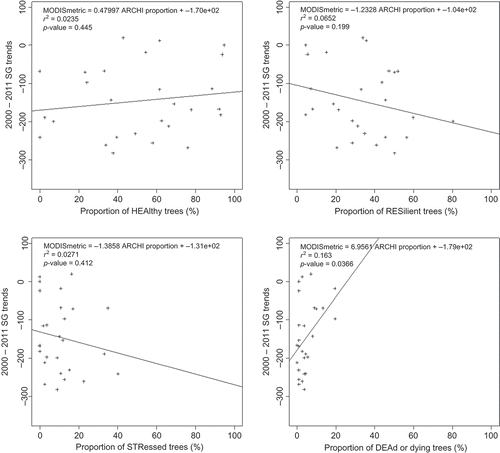
Figure 12. Variations in r 2 values between spring greenness and the proportion of main ARCHI types as a function of the year.
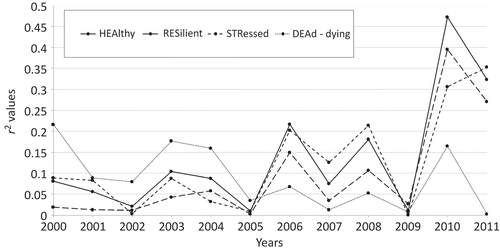
Figure 13. Relationships between the proportions of the main ARCHI types and spring greenness values in 2010.

Figure 14. Relationships between the proportion of ARCHI types and the MaxSG indicator (maximum of SG values of years 2010 and 2011).
